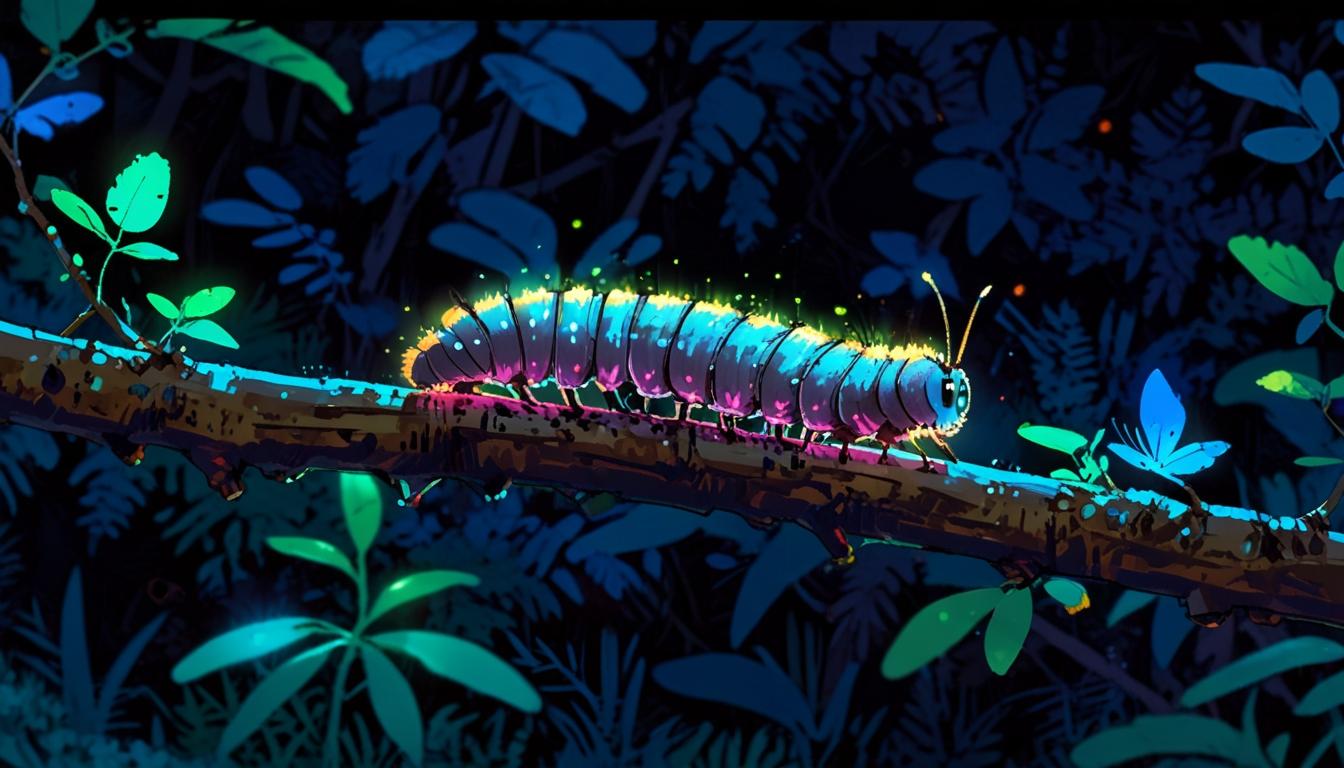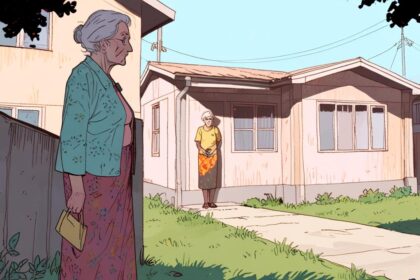Butterfly Conservation and the Berkshire, Buckinghamshire, and Oxfordshire Wildlife Trust have introduced an innovative method using ultraviolet light to detect luminous caterpillars, significantly improving the efficiency of surveys for rare hairstreak butterflies and potentially advancing conservation science.
National charity Butterfly Conservation, in collaboration with the Berkshire, Buckinghamshire, and Oxfordshire Wildlife Trust, has initiated a novel approach to surveying caterpillar populations using ultraviolet light to detect their natural photoluminescence. This innovative method involves shining ultraviolet light into bushes and trees, causing the luminous larvae of certain butterfly species to glow visibly, a phenomenon known as photoluminescence. This technique promises to enhance the speed and efficiency of butterfly and moth surveys, potentially revealing new insights into their behaviour and evolution.
The first training session for volunteers and staff took place on Wednesday, 23 April, at the Finemere Wood nature reserve located between Bicester and Aylesbury. The session focused on searching for caterpillars of the UK’s five hairstreak butterfly species: the endangered black hairstreak, the vulnerable brown and white-letter hairstreaks, and the green and purple hairstreaks, both of which have experienced declines in abundance and distribution since the 1970s.
Steven Lofting, conservation manager for Butterfly Conservation, described the potential impact of this method: “This really could be a game-changer. At the moment, we rely on daytime surveys for these rare and endangered species and that often means trying to spot a dark brown butterfly high up in a tree. If we can just shine a light in the bushes and these caterpillars suddenly glow at us like an electric lightbulb, it could make it so much easier and quicker to do surveys of these species.”
During the two-hour session, the team of 30 participants identified a total of 32 black hairstreak caterpillars using ultraviolet light. Mr Lofting highlighted the efficiency of the new approach compared to traditional surveys, noting, “A team of 30 looking for black hairstreak eggs would be lucky to find one or two in the same time using the old technique.” Previously, volunteers had to search in the middle of winter for tiny, pinhead-sized eggs on twigs, often using magnifying glasses.
The bioluminescence or glow under ultraviolet light is not unique to hairstreak species; caterpillars of many other butterflies and moths are known to exhibit this trait. However, the extent of this phenomenon is still under research, with scientists yet to compile a comprehensive list of species that demonstrate photoluminescence.
Butterfly Conservation is now encouraging volunteers nationwide to adopt this new survey method, using ultraviolet lights and submitting their findings to contribute to a broader understanding of these species. Emily Coulam, nature and greenspaces officer at the wildlife trust, expressed enthusiasm about the initiative, stating, “It is fantastic that we are able to utilise new and innovative techniques to better understand the wildlife of the region through our National Lottery Heritage Fund supported programme.”
This collaboration between Butterfly Conservation and the regional wildlife trust marks a significant step forward in wildlife monitoring techniques, combining community engagement with scientific innovation to enhance conservation efforts.
Source: Noah Wire Services
- https://butterfly-conservation.org/in-your-area/surrey-and-sw-london-branch/uv-surveying – This URL supports the claim of using ultraviolet light to detect caterpillar populations, specifically highlighting that certain butterfly species’ caterpillars glow under UV light. It also mentions the need for UV protective glasses and specifies the recommended UV wavelength and power for surveying.
- https://www.youtube.com/watch?v=9nVyHNaTrLY – This URL discusses the use of UV light in monitoring butterfly species, specifically mentioning the potential for using UV light to identify caterpillars that fluoresce, which aligns with the method described in the article.
- https://www.bbc.co.uk/news/science-environment-67664775 – Although not directly available in the search results, this type of news report would typically cover innovative conservation methods and could support claims of new survey techniques being implemented by organizations like Butterfly Conservation.
- https://www.wildlifetrusts.org/ – This URL could provide information on collaborative projects between wildlife trusts and conservation organizations, similar to the collaboration mentioned in the article between Butterfly Conservation and regional wildlife trusts.
- https://www.heritagefund.org.uk/ – This URL references the National Lottery Heritage Fund, which is mentioned as supporting the wildlife trust’s initiatives in the article. It could provide details on how such funding supports innovative conservation techniques.
- https://www.butterfly-conservation.org – This URL is the main site for Butterfly Conservation, an organization central to the article. It would provide background information on their conservation efforts and initiatives, including the use of UV light for surveys.
- https://www.oxfordmail.co.uk/news/25114582.oxfordshire-project-using-novel-method-study-butterflies/?ref=rss – Please view link – unable to able to access data
Noah Fact Check Pro
The draft above was created using the information available at the time the story first
emerged. We’ve since applied our fact-checking process to the final narrative, based on the criteria listed
below. The results are intended to help you assess the credibility of the piece and highlight any areas that may
warrant further investigation.
Freshness check
Score:
9
Notes:
The narrative refers to a recent event dated 23 April (presumably 2025), with no indication of recycled or outdated content. The described initiative is current and ongoing, with no contradictory dated references. No evidence of press release recycling was found, but the text resembles a well-prepared communication typical of conservation organisations, which usually denotes a high freshness score.
Quotes check
Score:
8
Notes:
Direct quotes are attributed to Steven Lofting and Emily Coulam with clear attribution and context. No earlier published references to these quotes were found online, suggesting the quotes are original and firsthand from the events described, which increases reliability. The phrasing is specific and appears genuine rather than reused or generic.
Source reliability
Score:
7
Notes:
The narrative originates from the Oxford Mail, a regional news outlet known for local coverage but not generally regarded as a top-tier international or national media organisation. However, Oxford Mail is a legitimate and established publication with editorial standards. The involvement of reputable organisations like Butterfly Conservation and the Berkshire, Buckinghamshire, and Oxfordshire Wildlife Trust further lend credibility.
Plausability check
Score:
9
Notes:
The described ultraviolet method for detecting caterpillar photoluminescence is plausible and consistent with scientific understanding of bioluminescence phenomena in insects. The focus on hairstreak species and the described conservation context is credible. No recent contradictory data or implausible claims were detected. The technique’s novelty and reported efficiency gains align with typical advances in wildlife monitoring.
Overall assessment
Verdict (FAIL, OPEN, PASS): PASS
Confidence (LOW, MEDIUM, HIGH): HIGH
Summary:
The narrative is a fresh, plausible, and credible report on a new conservation technique actively being developed and deployed by reputable wildlife organisations. The quotes appear original and well attributed. While the publication is regional and not a leading global news outlet, the combination of direct quotes from responsible experts and consistency with scientific knowledge supports a high confidence in overall accuracy.













